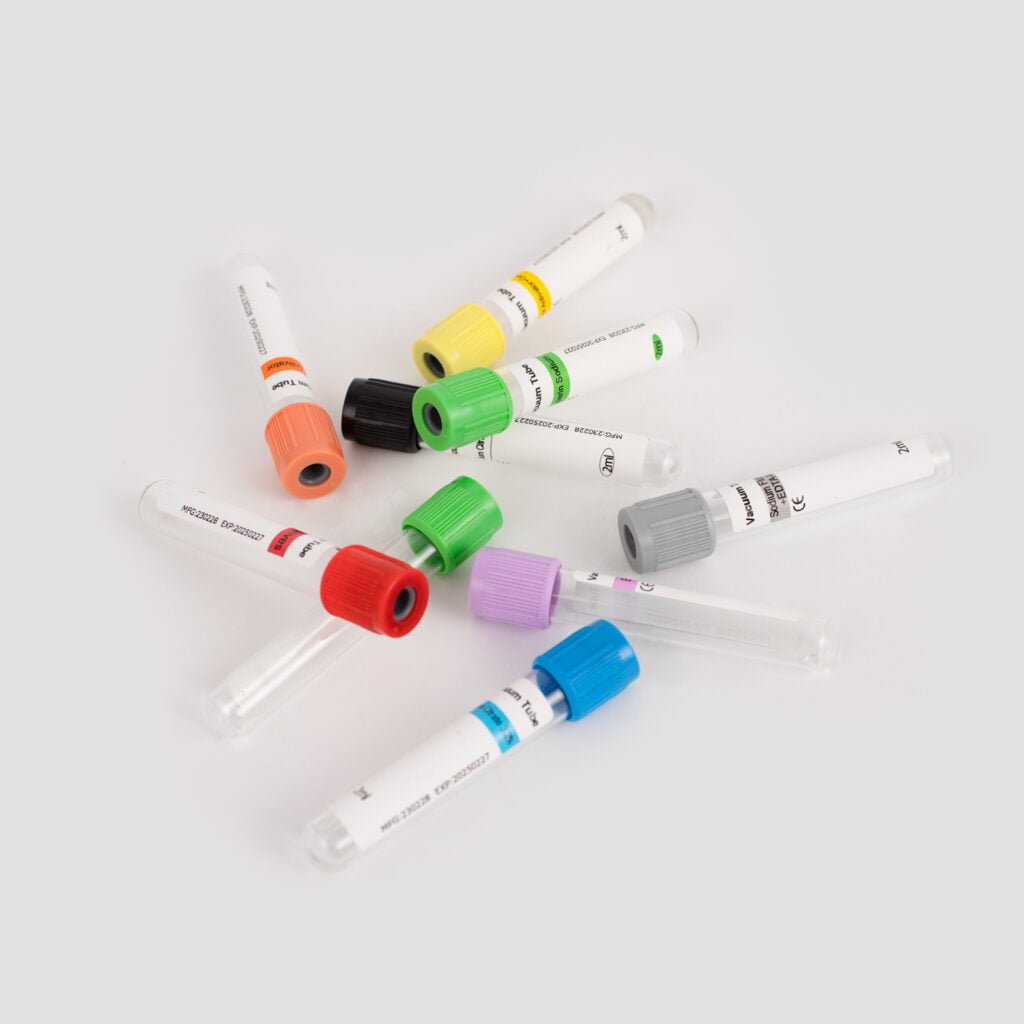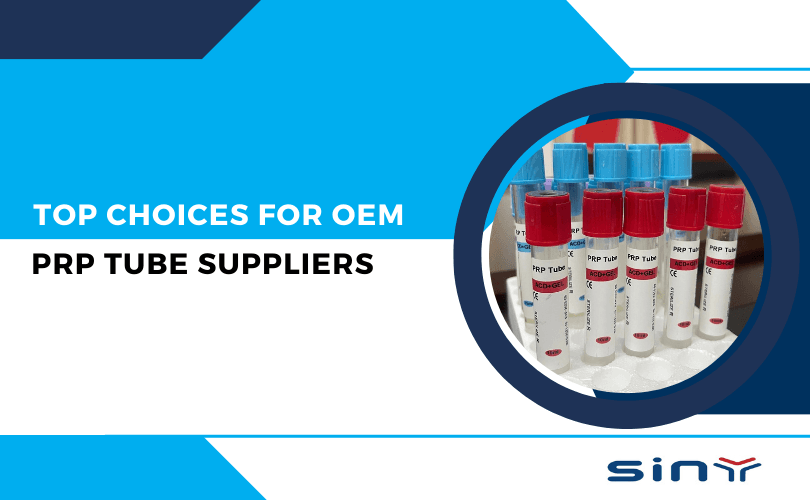Blood sample collection is one of the most crucial steps in the medical diagnostic process. Proper collection and preservation of blood collection tube are essential to ensure that laboratory tests provide accurate and reliable results. Any errors in the collection process or improper handling of blood samples can lead to false results, misdiagnosis, and even compromised patient care.
Table of Contents
Collect and Preserve Blood Samples
Whole blood is divided into non-coagulated and anti-coagulated blood according to the collection conditions. At the same time, the upper yellow liquid that has not been separated by anticoagulation is called serum; the upper yellow liquid that has been separated by anticoagulation is called plasma. The storage temperature and time of the sample and the method steps of serum, plasma and cell separation are also important factors affecting the test results before analysis. Blood cells consume some nutrients due to metabolism after blood collection, so these components should be centrifuged promptly to separate the cellular elements

Sample collection process
Therefore, the sample collection process should be standardized to reduce pre-analytical errors. This method primarily performs serum biochemistry tests, including liver and kidney function, myocardial enzymes, amylase, electrolytes (such as potassium, sodium, chloride, calcium, and phosphorus), thyroid function, drug tests, HIV tests, tumor markers, and serum immunology tests.
1. Do not collect serum for anticoagulation
1. Red additive-free blood collection tube: The principle of natural blood coagulation clots the blood, allowing the serum to naturally precipitate before centrifugation.
2. Collection with coagulation tubes: Use blue coagulation tubes. Generally, the serum stands for half an hour to one hour, then technicians centrifuge it directly for use or storage.
3. Collection of blood collection tubes containing separation gel and coagulant: The wall of the blood collection tube is siliconized and coated with a coagulant to accelerate blood coagulation and shorten the detection time.
The PET tube contains separation gel, which forms a barrier due to its strong affinity with the tube. After centrifugation, the serum remains free of oil droplets, making it ideal for serum biochemistry (liver function, kidney function, myocardial enzymes, amylase), electrolytes (serum potassium, sodium, chloride, calcium, phosphorus), thyroid function, drug detection, AIDS testing, tumor markers, and serum immunology
Advantages of using coagulation tubes
1. It can accelerate the coagulation of red blood cells;
2. Use separation gel to separate serum and better prevent hemolysis effectively.
Disadvantages of collecting serum
1. Red blood cells need to be completely coagulated, which takes a long time.
2. Serum is relatively tiny. One ml of whole blood is not anticoagulated, and only 0.2-0.3 ml of serum can be separated.
3. Anticoagulant plasma collection: Collect anticoagulant whole blood, gently invert it to ensure full anticoagulation, and then centrifuge it to directly separate the plasma for use or preservation.
Plasma Collection: Anticoagulants and Their Impact
To collect plasma, anticoagulants prevent the blood from clotting, followed by centrifugation. The type of anticoagulant used depends on the test being performed.
Heparin
- Heparin is one of the most widely used anticoagulants for plasma collection. It works by enhancing the activity of antithrombin III, which inhibits thrombin and prevents blood clotting.
- Ideal for conducting biochemical tests, measuring electrolytes (except for sodium, which heparin sodium can affect), and studying hemorheology.
Advantages
- Minimal dilution of the blood sample, allowing for accurate measurements.
- Effective for a wide range of tests without interfering with the results.
Disadvantages
- Heparin can interfere with molecular biology techniques like PCR, as it inhibits enzymes such as Taq polymerase.
EDTA (Ethylenediamine Tetraacetic Acid)
- EDTA binds calcium ions, which are necessary for blood coagulation. This anticoagulant is commonly used in hematology for complete blood counts (CBC) and other cell morphology tests.

Advantages
- It preserves the shape and structure of blood cells, making it ideal for cell counts and morphology studies.
Disadvantages
- It cannot be used for coagulation studies or tests involving calcium, as EDTA chelates calcium ions.
Sodium Citrate
- Sodium citrate also works by binding calcium ions, but it is primarily used for coagulation studies, such as prothrombin time (PT) and activated partial thromboplastin time (aPTT).
Advantages
- It preserves clotting factors, making it the anticoagulant of choice for coagulation tests.
Disadvantages
- Dilutes the blood, which must be accounted for when interpreting test results.
Precautions for choosing anticoagulation
1. The amount of anticoagulant added in each sample should be the same, and the amount of whole blood collected should be as consistent as possible.
2. Be sure to reverse all the anticoagulated blood gently. Complete anticoagulation ensures that all blood fully contacts the anticoagulant, preventing coagulation.
3. Collect more anticoagulated whole blood to obtain 0.4-0.5 ml of plasma from every 1 ml of blood.
4. Flocculation turbidity may occur during the thawing process after freezing and storing plasma. Centrifuge the sample to remove the turbidity and determine if further action is needed.
After collecting serum and plasma, store them immediately without a specific time limit. The lower the storage temperature, the better. If the temperature remains stable, you can store the samples at below -20°C for one month and below -70°C for three months.
Third, the centrifuge speed used to collect serum and plasma: the speed used to separate serum or plasma varies according to species.
The recommended centrifuge speed is:
- Mice: generally 1000-1500 rpm, centrifugation for 8-10 minutes.
- Rats, rabbits: typically 2000-2500 rpm, centrifugation for 8-10 minutes;
- 3. People: General 2500-3000 rpm, centrifugation for 8-10 minutes. Fourth.
The effect of high lipid and hemolytic factors:
Impact of hemolysis: The effect of hemolysis on some of the tested indicators depends not only on the method used but also on the analytical instrument used. The dual-wavelength measurement method can eliminate the colour interference of hemoglobin to a certain extent. Still, it cannot eliminate the interference of hemoglobin, especially when hemoglobin reacts with the reagent used. In general, mild hemolysis did not significantly interfere with the determination of most clinical chemistry indicators.
Severe hemolysis may have two effects:
(1) When the concentration of the tested component is higher in RBC than in plasma, the assay results are higher;
(2) If the concentration of the tested fraction in RBC is lower than in plasma, the tested fraction becomes slightly diluted.
Conclusion
The process of blood collection, from selecting the appropriate sample type (serum or plasma) to handling anticoagulants and storage conditions, plays a vital role in obtaining accurate laboratory results. Whether for routine tests or advanced diagnostics, errors in blood sample processing can have a significant impact. Processing blood samples correctly is crucial for reducing pre-analytical errors and ensuring the reliability of clinical data..
FAQs Blood Collection and Preservation
What is the difference between serum and plasma?
Serum is the liquid that remains after serum tube has clotted, while plasma is the liquid component of anticoagulated blood that contains clotting factors.
What are the common anticoagulants used in blood collection?
Common anticoagulants include heparin, EDTA Tube (ethylenediaminetetraacetic acid), and sodium citrate, each serving different purposes in laboratory tests.
What factors can affect blood test results?
Factors such as fasting time, patient positioning, tourniquet application, and anticoagulant selection can all influence test outcomes.
How long can serum and plasma be stored?
You can typically store serum and plasma at -20°C for up to 1 month and at -70°C for up to 3 months.
What is the recommended centrifuge speed for human blood samples?
We generally recommend spinning at a speed of 2500-3000 rpm for 8-10 minutes to achieve effective separation.
What steps can be taken to standardize blood collection procedures?
Standardizing procedures involves:
- Training personnel.
- Using consistent collection and handling techniques.
- Adhering to established protocols to reduce pre-analytical errors.



























































